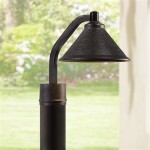How to Take Outdoor Portraits with a DSLR
Outdoor portrait photography offers a dynamic and engaging way to capture subjects within natural environments. Utilizing a DSLR camera provides photographers with the control and versatility needed to achieve professional-looking results. This article outlines key considerations and techniques for successful outdoor portraiture using a DSLR camera.
Choosing the Right Location and Time
Location selection significantly impacts the mood and aesthetic of outdoor portraits. Locations can complement the subject's personality, provide interesting backdrops, or tell a story. Considerations include the presence of distracting elements, the availability of natural light, and accessibility.
The time of day plays a crucial role in the quality of natural light. The "golden hour," the period shortly after sunrise and before sunset, offers soft, warm, and diffused light, ideal for flattering portraits. Overcast days provide even, soft light, minimizing harsh shadows. Midday sun, however, presents challenges due to its intensity and can create unflattering shadows.
Mastering Natural Light
Understanding how to work with natural light is fundamental to outdoor portrait photography. "Open shade," areas shaded from direct sunlight but open to the sky, creates a soft, even light source, often preferred for portraits. Reflectors can be used to bounce light back onto the subject, filling in shadows and creating a more balanced exposure.
Backlighting, where the light source is behind the subject, can create a dramatic and ethereal effect. Careful exposure settings are required to prevent the subject from appearing silhouetted. Alternatively, embracing the silhouette can create a striking artistic image.
Essential DSLR Camera Settings
Aperture, shutter speed, and ISO work in conjunction to control exposure and depth of field. A wider aperture (lower f-number) creates a shallow depth of field, blurring the background and drawing attention to the subject. A narrower aperture (higher f-number) keeps more of the scene in focus. Shutter speed should be fast enough to freeze motion and prevent blur, especially in windy conditions. ISO should be kept as low as possible to minimize noise, adjusting it upwards only when necessary to achieve proper exposure in low-light situations.
Shooting in RAW format is recommended as it retains more image data, allowing for greater flexibility during post-processing. This is particularly valuable for adjusting white balance and recovering details in shadows and highlights.
Lens Selection and Focal Length
Lens choice affects the perspective and compression of the image. Lenses with longer focal lengths (e.g., 85mm, 105mm) compress the background, creating a flattering look for portraits. Wider-angle lenses (e.g., 35mm, 50mm) capture more of the environment, making them suitable for environmental portraits where the context is important.
Posing and Composition
Effective posing helps to convey emotion and flatter the subject. Natural and relaxed poses often work best, avoiding stiff or unnatural positions. Directing the subject's gaze and hand placement can significantly improve the portrait's impact. Communication with the subject is crucial to establish a comfortable and collaborative environment.
Compositional guidelines, such as the rule of thirds and leading lines, can enhance the visual appeal of the portrait. The rule of thirds suggests placing the subject off-center for a more dynamic composition. Leading lines draw the viewer's eye towards the subject. Experimenting with different angles and perspectives can create unique and engaging images.
Equipment Considerations beyond the Camera
While the DSLR camera is the central tool, other equipment can enhance outdoor portraiture. A tripod provides stability for sharper images, especially in low-light conditions. A reflector, as previously mentioned, manipulates natural light. External flash units, while less frequently used in natural light settings, can provide fill light or create dramatic effects.
Post-Processing Techniques
Post-processing software allows for further refinement of the images. Adjustments to white balance, exposure, contrast, and sharpness can enhance the overall look of the portrait. Retouching, such as removing blemishes or softening skin, should be done subtly to maintain a natural appearance.
Practice and Experimentation
Developing proficiency in outdoor portrait photography requires practice and experimentation. Exploring different locations, lighting conditions, and posing techniques will help to develop a personal style and understanding of the nuances of capturing compelling portraits outdoors.

How To Take Outdoor Portraits Like A Pro Live Snap Create

Settings For Portraits Taken Indoors Outdoors

How To Take Outdoor Portraits Like A Pro Live Snap Create Digital Photography Lessons Basics

What Is The Best Setting For Outdoor Portraits With Examples Formed From Light

10 Settings And Equipment Tips For Portrait Photography

How To Take Outdoor Portraits Like A Pro Live Snap Create

How To Take Outdoor Portraits Like A Pro Live Snap Create

How To Take Outdoor Portraits Like A Pro Live Snap Create

How To Take Great Outdoor Photographs Canvasprints Com

Photographing People In The Sun Outdoor Portrait Photography Part 1 Expert Blogs Tip Techniques Reviews Adorama Learning Center
Related Posts







